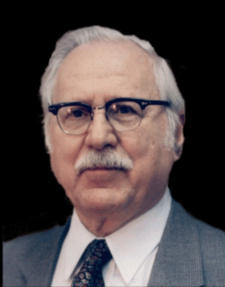NEED TO KNOW KNOWLEDGE
Need to know – Essential Knowledge : A fine selection we have made to bring you the knowledge many have been searching for, and even more didn’t know it existed.
We believe this knowledge is essential knowledge that everybody should know because it sheds light on a lot of lost knowledge that unfortunately is not being taught in schools or universities. NEED TO KNOW NEED TO KNOW NEED TO KNOW
Zecharia Sitchin
Zecharia Sitchin (July 11, 1920 – October 9, 2010)was an Azerbaijani-born American author of books proposing an explanation for human origins involving ancient astronauts. Sitchin attributes the creation of the ancient Sumerian culture to the Anunnaki, which he states was a race of extraterrestrials from a planet beyond Neptune called Nibiru. He believed this hypothetical planet of Nibiru to be in an elongated, elliptical orbit in the Earth’s own Solar System, asserting that Sumerian mythology reflects this view. Sitchin’s books have sold millions of copies worldwide and have been translated into more than 25 languages.
Similar to earlier authors such as Immanuel Velikovsky and Erich von Däniken, Sitchin advocated hypotheses in which extraterrestrial events supposedly played a significant role in ancient human history.
According to Sitchin’s interpretation of Mesopotamian iconography and symbology, outlined in his 1976 book The 12th Planetand its sequels, there is an undiscovered planet beyond Neptune that follows a long, elliptical orbit, reaching the inner solar system roughly every 3,600 years. This planet is called Nibiru (although Jupiter was the planet associated with the god Marduk in Babylonian cosmology)
According to Sitchin, Nibiru (whose name was replaced with MARDUK in original legends by the Babylonian ruler of the same name in an attempt to co-opt the creation for himself, leading to some confusion among readers) collided catastrophically with Tiamat (a goddess in the Babylonian creation myth the Enûma Eliš), which he considers to be another planet once located between Mars and Jupiter. This collision supposedly formed the planet Earth, the asteroid belt, and the comets. Sitchin states that when struck by one of planet Nibiru’s moons, Tiamat split in two, and then on a second pass Nibiru itself struck the broken fragments and one half of Tiamat became the asteroid belt. The second half, struck again by one of Nibiru’s moons, was pushed into a new orbit and became today’s planet Earth.
The below documentaries are meant to question the current belief systems on earth. Please do your research on Sitchin and the subjects he addresses.
|
Lost Realms – Zecharia Sitchin |
Enki Sumerian Tablet Translation Ch.1- 1 of 6 | Enuma Elish… Seven Tablets of Creation – Tablet |
Downloadable E-books
The below E-books are free to download and can be accessed in our E-book library under Ancient Wisdom.
A free membership to access the E-book library is required.
The Sumerian King List still puzzles historians after more than a century of research
Out of the many incredible artifacts that have been recovered from sites in Iraq where flourishing Sumerian cities once stood, few have been more intriguing that the Sumerian King List, an ancient manuscript originally recorded in the Sumerian language, listing kings of Sumer (ancient southern Iraq) from Sumerian and neighboring dynasties, their supposed reign lengths, and the locations of “official” kingship. What makes this artifact so unique is the fact that the list blends apparently mythical pre-dynastic rulers with historical rulers who are known to have existed. The first fragment of this rare and unique text, a 4,000-year-old cuneiform tablet, was found in the early 1900s by German-American scholar Hermann Hilprecht at the site of ancient Nippur and published in 1906. Since Hilprecht’s discovery, at least 18 other exemplars of the king’s list have been found, most of them dating from the second half of the Isin dynasty (c. 2017-1794 BCE.). No two of these documents are identical. However, there is enough common material in all versions of the list to make it clear that they are derived from a single, “ideal” account of Sumerian history.
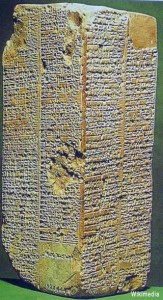
Among all the examples of the Sumerian King List, the Weld-Blundell prism in the Ashmolean Museum cuneiform collection in Oxford represents the most extensive version as well as the most complete copy of the King List. The 8-inch-high prism contains four sides with two columns on each side. It is believed that it originally had a wooden spindle going through its center so that it could be rotated and read on all four sides. It lists rulers from the antediluvian (“before the flood”) dynasties to the fourteenth ruler of the Isin dynasty (ca. 1763–1753 BC). The list is of immense value because it reflects very old traditions while at the same time providing an important chronological framework relating to the different periods of kingship in Sumeria, and even demonstrates remarkable parallels to accounts in Genesis.
The ancient civilization of Sumer
Sumer (sometimes called Sumeria), is the site of the earliest known civilization, located in the southernmost part of Mesopotamia between the Tigris and the Euphrates rivers, in the area that later became Babylonia and is now southern Iraq from around Baghdad to the Persian Gulf.
By the 3rd millennium BC, Sumer was the site of at least twelve separate city states: Kish, Erech, Ur,Sippar, Akshak, Larak, Nippur, Adab, Umma, Lagash, Bad-tibira, and Larsa. Each of these states comprised a walled city and its surrounding villages and land, and each worshiped its own deity, whose temple was the central structure of the city. Political power originally belonged to the citizens, but, as rivalry between the various city-states increased, each adopted the institution of kingship.
The Sumerian King List, records that eight kings reigned before a great flood. After the Flood, various city-states and their dynasties of kings temporarily gained power over the others.
Sumer’s mythical past
The Sumerian King List begins with the very origin of kingship, which is seen as a divine institution: “the kingship had descended from heaven”. The rulers in the earliest dynasties are represented as reigning fantastically long periods:
“After the kingship descended from heaven, the kingship was in Eridug. In Eridug, Alulim became king; he ruled for 28800 years. Alaljar ruled for 36000 years. 2 kings; they ruled for 64800 years.”
Support us with a cup of coffee?
If you like what Awaken Consciousness is offering you, would you please support us by buying us a cup of coffee? Any support and donation is very welcome and will allow us to keep going just a little longer and keep this website add free. Just slide the slider left <- or right -> to change the amount of coffee you'd like to share with us 😉 Thank you !
Some of the rulers mentioned in the early list, such as Etana, Lugal-banda and Gilgamesh, are mythical or legendary figures whose heroic feats are subjects of a series of Sumerian and Babylonian narrative compositions.
The early list names eight kings with a total of 241,200 years from the time when kingship “descended from heaven” to the time when “the Flood” swept over the land and once more “the kingship was lowered from heaven” after the Flood.
Interpretation of long reigns
The amazingly long tenure of the early kings has provoked many attempts at interpretation. At one extreme is the complete dismissal of the astronomically large figures as “completely artificial” and the view that they are unworthy of serious consideration. At the other extreme, is the belief that the numbers have a basis in reality and that the early kings were indeed gods who were capable of living much longer than humans.
In between the two extremes is the hypothesis that the figures represent relative power, triumph or importance. For example, in ancient Egypt, the phrase “he died aged 110” referred to someone who lived life to the full and who offered an important contribution to society. In the same way, the extremely long periods of reign of the early kings may represent how incredibly important they were perceived as being in the eyes of the people. This doesn’t explain, however, why the periods of tenure later switched to realistic time periods.
Related to this perspective is the belief that although the early kings are historically unattested, this does not preclude their possible correspondence with historical rulers who were later mythicised. Finally, some scholars have sought to explain the figures through a mathematical investigation and interpretation (e.g. Harrison, 1993).
Relation to Genesis
Some scholars (e.g. Wood, 2003) have drawn attention to the fact that there are remarkable similarities between the Sumerian King List and accounts in Genesis. For example, Genesis tells the story of ‘the great flood’ and Noah’s efforts to save all the species of animals on Earth from destruction. Likewise, in the Sumerian King List, there is discussion of a great deluge: “the flood swept over the earth.”
The Sumerian King List provides a list of eight kings (some versions have 10) who reigned for long periods of time before the flood, ranging from 18,600 to 43,200 years. This is similar to Genesis 5, where the generations from Creation to the Flood are recorded. Interestingly, between Adam and Noah there are eight generations, just as there are eight kings between the beginning of kingship and the flood in the Sumerian King List.
After the flood, the King List records kings who ruled for much shorter periods of time. Thus, the Sumerian King List not only documents a great flood early in man’s history, but it also reflects the same pattern of decreasing longevity as found in the Bible – men had extremely long life spans before the flood and much shorter life spans following the flood (Wood, 2003).
The Sumerian King List truly is a perplexing mystery. Why would the Sumerians combine mythical rulers with actual historical rulers in one document? Why are there so many similarities with Genesis? Why were ancient kings described as ruling for thousands of years? These are just some of the questions that still remain unanswered after more than a century of research.
References
The Sumerian King List – University of Oxford
Great Discoveries in Biblical Archaeology: The Sumerian King List – by Bryant G. Wood
The Sumerian king list: translation – The Electronic Text Corpus of Sumerian Literature
The Sumerian King List – by L.C.Geerts
Reinvestigating the Antediluvian Sumerian King List – by R. K. Harrison
Eckhart Tolle
 Eckhart is a spiritual teacher and author who was born in Germany and educated at the Universities of London and Cambridge. At the age of 29, a profound inner transformation radically changed the course of his life. The next few years were devoted to understanding, integrating and deepening that transformation, which marked the beginning of an intense inward journey. Later, he began to work in London with individuals and small groups as a counselor and spiritual teacher. Since 1995 he has lived in Vancouver, Canada. Eckhart Tolle is the author of the #1 New York Times bestseller The Power of Now (translated into 33 languages) and the highly acclaimed follow-up A New Earth, which are widely regarded as two of the most influential spiritual books of our time.
Eckhart is a spiritual teacher and author who was born in Germany and educated at the Universities of London and Cambridge. At the age of 29, a profound inner transformation radically changed the course of his life. The next few years were devoted to understanding, integrating and deepening that transformation, which marked the beginning of an intense inward journey. Later, he began to work in London with individuals and small groups as a counselor and spiritual teacher. Since 1995 he has lived in Vancouver, Canada. Eckhart Tolle is the author of the #1 New York Times bestseller The Power of Now (translated into 33 languages) and the highly acclaimed follow-up A New Earth, which are widely regarded as two of the most influential spiritual books of our time.
Eckhart’s profound yet simple teachings have already helped countless people throughout the world find inner peace and greater fulfillment in their lives. At the core of the teachings lies the transformation of consciousness, a spiritual awakening that he sees as the next step in human evolution. An essential aspect of this awakening consists in transcending our ego-based state of consciousness. This is a prerequisite not only for personal happiness but also for the ending of violence on our planet.
| Spiritual Teachings |
The Best Eckhart Tolle Talk |
Conversations on Compassion |
Alan Watts
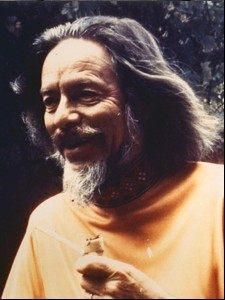 Alan Wilson Watts (6 January 1915 – 16 November 1973) was a British-born philosopher, writer, and speaker, best known as an interpreter and populariser of Eastern philosophy for a Western audience. Born in Chislehurst, he moved to the United States in 1938 and began Zen training in New York. Pursuing a career, he attended Seabury-Western Theological Seminary, where he received a master’s degree in theology. Watts became an Episcopal priest then left the ministry in 1950 and moved to California, where he joined the faculty of the American Academy of Asian Studies
Alan Wilson Watts (6 January 1915 – 16 November 1973) was a British-born philosopher, writer, and speaker, best known as an interpreter and populariser of Eastern philosophy for a Western audience. Born in Chislehurst, he moved to the United States in 1938 and began Zen training in New York. Pursuing a career, he attended Seabury-Western Theological Seminary, where he received a master’s degree in theology. Watts became an Episcopal priest then left the ministry in 1950 and moved to California, where he joined the faculty of the American Academy of Asian Studies
Towards the end of his life, he divided his time between a houseboat in Sausalito and a cabin on Mount Tamalpais. His legacy has been kept alive by his son, Mark Watts, and many of his recorded talks and lectures are available on the Internet. According to the critic Erik Davis, his “writings and recorded talks still shimmer with a profound and galvanizing lucidity.
“Inability to accept the mystic experience is more than an intellectual handicap. Lack of awareness of the basic unity of organism and environment is a serious and dangerous hallucination. For in a civilization equipped with immense technological power, the sense of alienation between man and nature leads to the use of technology in a hostile spirit – to the “conquest” of nature instead of intelligent co-operation with nature.” – Alan Watts
We believe that Alan Watts was one of the greater philosophers of the 20th century. His teachings are profound and provide great insights in life in general and consciousness in particular. If you have some spare time, please invest it in listening to one of his teachings below and then share this knowledge with the world.
Thank you!
| Stop trying to save the world! | Society Is A Hoax , Take Control Of Your Life! |
Religion is not the path to know God |
John Hagelin
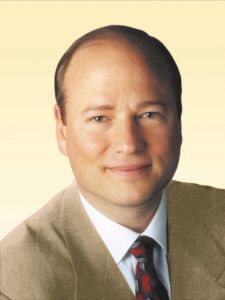
John Samuel Hagelin (born June 9, 1954) is an American particle physicist, three-time candidate of the Natural Law Party for President of the United States (1992, 1996, and 2000), and director of the Transcendental Meditation movement for the United States.
As a researcher at the European Organization for Nuclear Research (CERN) (1981–1982) and the Stanford Linear Accelerator Center (SLAC) (1982–1983), Hagelin made contributions to the development of unified field theory. He is now Professor of Physics at Maharishi University of Management (MUM). Hagelin believes that his extended version of unified field theory is identified with Maharishi Mahesh Yogi’s “unified field of consciousness”, a view that is rejected by “virtually every theoretical physicist in the world”.
Non-academic positions Hagelin holds include an appointment by Maharishi Mahesh Yogi as raja of Invincible America, president of the David Lynch Foundation and honorary chairman of the Board of Trustees of Maharishi University of Management.
Hagelin and 12 others founded the Natural Law Party in 1992, concluding “natural law is the solution to problems” and that the government can solve social problems by following these “Natural Laws.”
| What is the Universe made of and where does our Consciousness come from. | Entanglement, Space-Time Wormholes, and the Brain – John Hagelin | John Hagelin, Ph.D. – Buddha at the Gas Pump Interview |
Gregg Braden
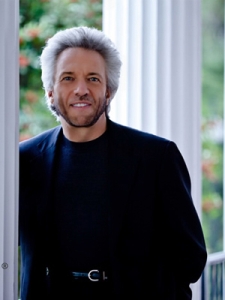 New York Times best-selling author of THE TURNING POINT, FRACTAL TIME, THE GOD CODE and THE DIVINE MATRIX and is a 2015 nominee of the prestigious TEMPLETON AWARD.
New York Times best-selling author of THE TURNING POINT, FRACTAL TIME, THE GOD CODE and THE DIVINE MATRIX and is a 2015 nominee of the prestigious TEMPLETON AWARD.
Since 1986 Gregg has explored high mountain villages, remote monasteries, and forgotten texts to merge their timeless secrets with the best science of today. His discoveries have led to 11 award-winning books published in 38 languages.
New discoveries suggest that our world is the mirror of our beliefs. What we once believed is about to change! What would it mean to discover that the power to create joy, to heal suffering, and bring peace to nations lives inside of you?
Are the miracles that we see in the quantum world actually showing us our greatest possibilities rather than our scientific limits?
Could the spontaneous healing of disease, an instant connection with everyone and everything, and even time travel, be our true heritage in the universe?
| The Divine Matrix – Awaken your dormant abilities! | Our electric heart affects our reality! | Healing myself through knowledge |
Bruce Lipton
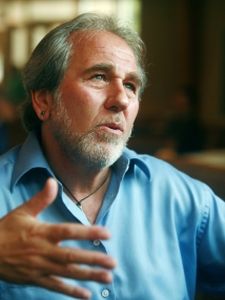 Bruce H. Lipton, PhD, born 21 October 1944 at Mount Kisco, New York, is an American developmental biologist best known for promoting the idea that genes and DNA can be manipulated by a person’s beliefs. He is an internationally recognized leader in bridging science and spirit. Stem cell biologist, bestselling author and recipient of the 2009 Goi Peace Award, he has been a guest speaker on hundreds of TV and radio shows, as well as keynote presenter for national and international conferences.
Bruce H. Lipton, PhD, born 21 October 1944 at Mount Kisco, New York, is an American developmental biologist best known for promoting the idea that genes and DNA can be manipulated by a person’s beliefs. He is an internationally recognized leader in bridging science and spirit. Stem cell biologist, bestselling author and recipient of the 2009 Goi Peace Award, he has been a guest speaker on hundreds of TV and radio shows, as well as keynote presenter for national and international conferences.
Dr. Lipton has taken his award-winning medical school lectures to the public and is currently a sought after keynote speaker and workshop presenter. He lectures to conventional and complementary medical professionals and lay audiences about leading-edge science and how it dovetails with mind-body medicine and spiritual principles. He has been heartened by anecdotal reports from hundreds of former audience members who have improved their spiritual, physical and mental well-being by applying the principles he discusses in his lectures. He is regarded as one of the leading voices of the new biology. Dr Lipton’s work summarizing his findings, entitled The Biology of Belief, Spontaneous Evolution, Our Positive Future and a Way to Get There From Here and his latest book The Honeymoon Effect.
Dr. Lipton explains in understandable terms how our thoughts affect our bodies. And not only our own bodies, but other peoples bodies also!
| Bruce Lipton – ‘The Power Of Consciousness’ – Interview by Iain McNay (Must watch!) | Bruce Lipton: “People perish for the lack of this hidden knowledge…” – Law Of Attraction | Bruce Lipton – The biology of belief |
Nikola Tesla
 Inventor Nikola Tesla was born in July of 1856, in what is now Croatia. He came to the United States in 1884 and briefly worked with Thomas Edison before the two parted ways. He sold several patent rights, including those to his alternating-current machinery, to George Westinghouse. His 1891 invention, the “Tesla coil,” is still used in radio technology today. Tesla died in New York City on January 7, 1943.
Inventor Nikola Tesla was born in July of 1856, in what is now Croatia. He came to the United States in 1884 and briefly worked with Thomas Edison before the two parted ways. He sold several patent rights, including those to his alternating-current machinery, to George Westinghouse. His 1891 invention, the “Tesla coil,” is still used in radio technology today. Tesla died in New York City on January 7, 1943.
After parting ways with Edison, in 1885 Tesla received funding for the Tesla Electric Light Company and was tasked by his investors to develop improved arc lighting. After successfully doing so, however, Tesla was forced out of the venture and for a time had to work as a manual laborer in order to survive. His luck changed in 1887, when he was able to find interest in his AC electrical system and funding for his new Tesla Electric Company. Setting straight to work, by the end of the year, Tesla had successfully filed several patents for AC-based inventions.
The true father of radio
Tesla tinkered with radio waves as early as 1892, debuting a radio wave-controlled boat in 1898 with great fanfare at an electrical exhibition at New York’s Madison Square Garden. Expanding on the technology, he patented more than a dozen ideas related to radio communication, before Italian inventor Guglielmo Marconi leapt ahead of a financially unstable Tesla and completed the first transatlantic radio transmission (a bit of Morse code, sent from England to Newfoundland) on the back of Tesla’s science. Marconi and Tesla’s battle for intellectual recognition waged for decades before the U.S. Supreme Court ultimately revoked some of Marconi’s patents in 1943, restoring Tesla as the father of radio, at least legally.
He was a brilliant inventor. When Einstein was asked how it felt to be the smartest man on the planet he answered:
” I don’t know, you’ll have to ask Nikola Tesla ”
| Documentary on the inventions of Nikola Tesla | A compelling comparison of Nikola Tesla’s inventions and the Pyramids in Egypt | An interview Nikola Tesla had with a journalist in the 1899’s |
Ingo Swann – A remarkable Remote Viewer
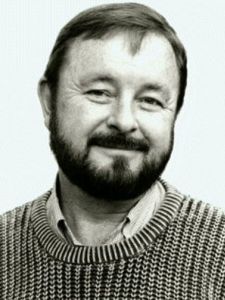
Ingo Douglas Swann, (14 September 1933, Telluride, Colorado – 31 January 2013, New York City) was a psychic, artist, and author known for being the co-creator, along with Russell Targ and Harold Puthoff, of remote viewing, and specifically the Stargate Project.
Swann was a psychic who called himself a “consciousness researcher” who had sometimes experienced “altered states of consciousness.” He said, “I don’t get ‘tested’, I only work with researchers on well-designed experiments.” According to Russell Targ and Harold Puthoff, “Swann-inspired innovations” have led to impressive results in parapsychology. Indeed, experiments not controlled by Swann have not been successful, and they are rarely mentioned, and if so, only in passing.
Swann helped develop the process of remote viewing at the Stanford Research Institute in experiments that caught the attention of the Central Intelligence Agency. He is commonly credited with proposing the idea of controlled remote viewing, a process in which viewers would view a location given nothing but its geographical coordinates, which was developed and tested by Puthoff and Targ with CIA funding.
In his 1998 autobiography Penetration: The Question of Extraterrestrial and Human Telepathy, Swann described his work with individuals in an unknown agency who study extraterrestrials, his remote viewing of a secret E.T. base on the hidden side of the moon and his “shocking” experience with a sexy scantily dressed female E.T. in a Los Angeles supermarket.
You can download the e-book along with more books on remote viewing in our E-book library under Remote Viewing.
| Ingo Swann Human Super Sensitivities and the Future |
More Secrets Revealed |
Dr. Steven Greer about Ingo Swann |
Edgar Cayce
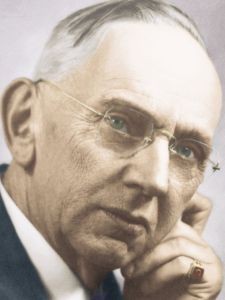
Edgar Cayce (March 18, 1877 – January 3, 1945) was an American mystic who answered questions on subjects as varied as healing, reincarnation, wars, Atlantis, and future events while in a trance. A biographer gave him the nickname, “The Sleeping Prophet.” A nonprofit organization, the Association for Research and Enlightenment,was founded to facilitate the study of Cayce’s work. A hospital and a university were also established.
Cayce is a well-documented psychic of the 20th century. Hundreds of books have been written about him. Cayce’s practice of reading through the entire Bible each year was thought to give him the insight to reconcile his Christian beliefs with the metaphysical information provided while in trance, and some consider him the true founder and a principal source of the most characteristic beliefs of the New Age Movement.
Cayce became a celebrity toward the end of his life, and he believed the publicity given to his prophecies overshadowed the more important parts of his work, such as healing the sick and studying religion. Skeptics challenge Cayce’s alleged psychic abilities, and traditional Christians also question his unorthodox answers on religious matters such as reincarnation, and the Akashic records.
Until September 1923, his readings were not systematically recorded or preserved. However, an article published in the Birmingham Post-Herald on October 10, 1922, quotes Cayce as saying that he had given 8,056 readings as of that date and it is known that he gave approximately 13,000–14,000 readings after that date. Today, a total of 14,306 are available at A.R.E. Cayce headquarters in Va. Beach and an online member-only section along with background information, correspondence, and follow-up documentation
| The Sleeping Prophets Predictions |
Sleeping Psychic (Edgar Cayce) [Biography] |
Edgar Cayce Predictions |
Support us with a cup of coffee?
If you like what Awaken Consciousness is offering you, would you please support us by buying us a cup of coffee? Any support and donation is very welcome and will allow us to keep going just a little longer and keep this website add free. Just slide the slider left <- or right -> to change the amount of coffee you'd like to share with us 😉 Thank you !

